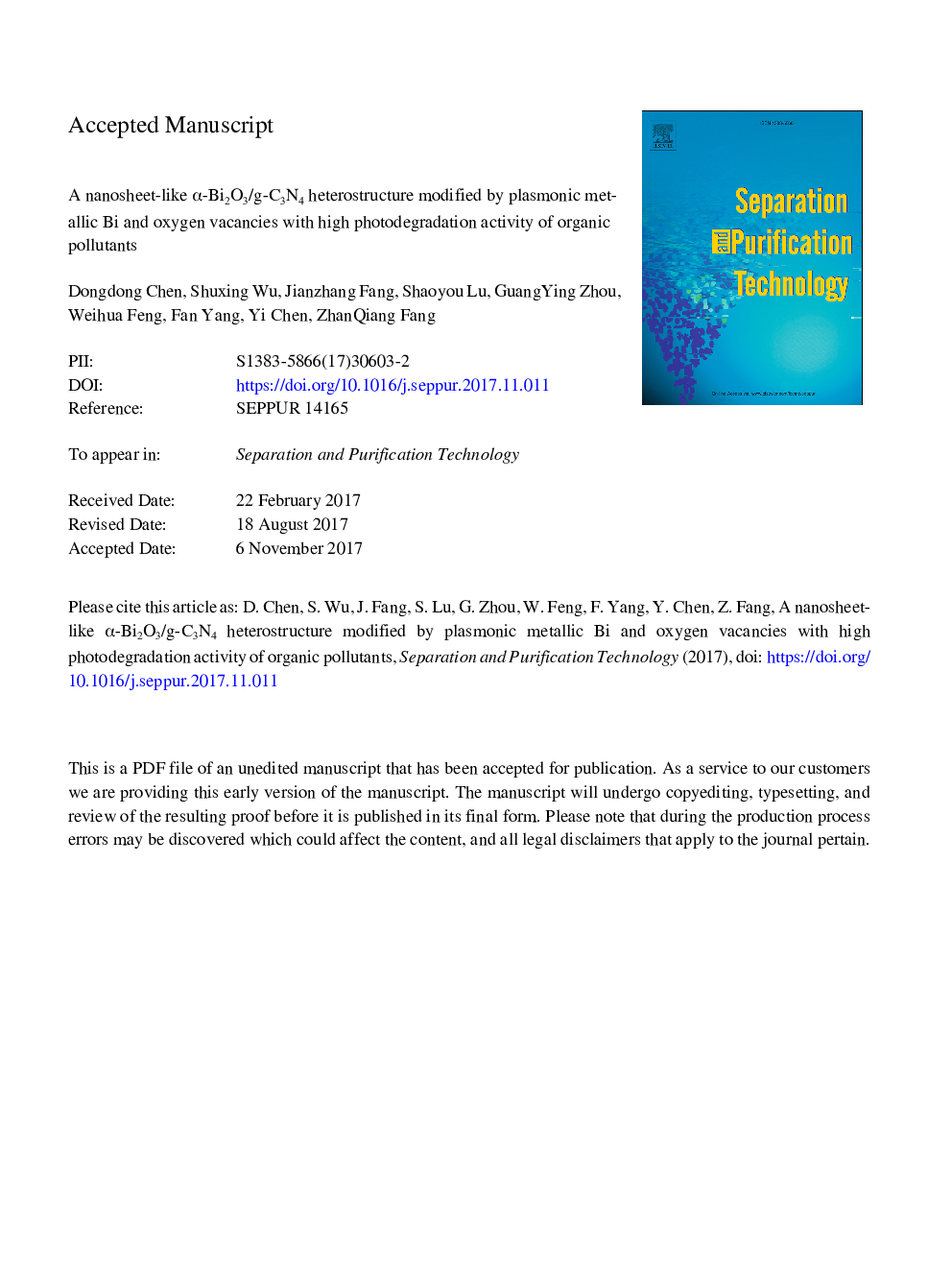| Article ID | Journal | Published Year | Pages | File Type |
|---|---|---|---|---|
| 7044130 | Separation and Purification Technology | 2018 | 36 Pages |
Abstract
Bi/α-Bi2O3 nanoparticles rich in oxygen vacancies in the surface and subsurface loading on g-C3N4 nanosheets were realized via a calcination-photoreduction technique, during which the emergence of oxygen vacancies and the generation of metallic Bi from α-Bi2O3 decomposition were achieved simultaneously. The co-occurrence of Bi nanoparticles and oxygen vacancies was favorable for the consumption and separation of the photogenerated electrons and holes. The three-component heterojunction photocatalyst (Bi/α-Bi2O3/g-C3N4, labeled as BBC) exhibited a remarkably high photocatalytic activity under the visible light irradiation, the degradation rate reached almost 90.2% for Tetracycline (TC) and 95.6% for RhB after 180â¯min and 90â¯min reaction respectively, far outperforming other decent photocatalysts under the same conditions. The enhanced photocatalytic activity was attributed to the synergistic effect of surface oxygen vacancies (OVs) and Bi nanoparticles. Furthermore, a probable photocatalytic mechanism for degrading the target contaminants by BBC photocatalysts was tentatively proposed.
Related Topics
Physical Sciences and Engineering
Chemical Engineering
Filtration and Separation
Authors
Dongdong Chen, Shuxing Wu, Jianzhang Fang, Shaoyou Lu, GuangYing Zhou, Weihua Feng, Fan Yang, Yi Chen, ZhanQiang Fang,
